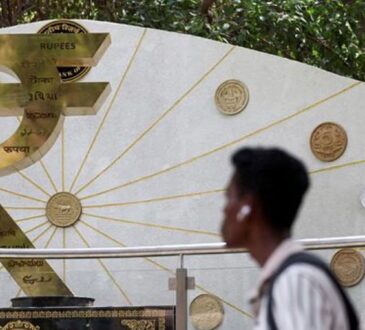LONDON – Global shares rallied, while gold and safe-haven currencies slumped against a resurgent dollar on May 12 as the US and China agreed to temporarily slash harsh reciprocal tariffs and cooperate to avoid rupturing the global economy.
Following weekend talks in Geneva, both sides agreed that the US would drop levies on Chinese imports from 145 per cent to 30 per cent during a 90-day negotiation period, and China would cut duties from 125 per cent to 10 per cent.
Wall Street stocks were set for significant daily gains, with the S&P 500 index rising 2.9 per cent in early trades and the tech-focused Nasdaq Composite advancing by 4 per cent.
In a joint statement on May 12, Washington and Beijing said they recognised the importance of their bilateral trade relationship to both countries and the global economy, in language that analysts widely said had brightened the market outlook.
An index tracking the dollar against other major currencies rose further from last month’s three-year trough with an almost 1.1 per cent gain, while Japan’s yen fell 2 per cent to 148.2 per dollar .
The retreat from haven assets pushed Switzerland’s franc 1.6 per cent lower on the day, in a jolt of relief for Swiss exporters and the nation’s central bank.
Spot gold prices, which hit an all-time high of US$3,500 last month and often move inversely to the dollar, fell almost 3 per cent to US$3,231 an ounce.
“This announcement is not only better than we expected but also better than the market would have expected back in March,” Deutsche Bank strategists said in a note to clients about US and China’s agreement to suspend tariffs.
The euro, which surged in April as investors questioned the dollar’s long-held status as the world’s reserve currency, was 1 per cent lower at US$1.1138.
Mr Kit Juckes, chief FX strategist at Societe Generale, said the tariff pause was a “substantial relief” for the US and China.
With tariff anxiety having already caused some Chinese exporters to consider their futures, data this weekend showed the nation’s factory-gate prices had dropped by the most in six months in April.
Mr Trump’s erratic trade policies had also sparked fears over US corporate earnings, with investors having entered this week nervous about an impending update from retail giant Walmart after a slew of US multi-nationals pulled their forecasts.
On May 12, however, commodities traders rushed to reassess the recessionary risks of tariff uncertainty, with oil traders pricing Brent crude for delivery next month almost 4 per cent higher at US$66.30 a barrel, up from around US$57 a week ago.
Aluminium prices jumped 2.9 per cent to US$2,488 while London-traded copper futures gained 1 per cent to US$9,462 a metric tonne. Europe’s regional STOXX 600 was last trading 1 per cent higher and Hong Kong’s Hang Seng Index ended the day with an almost 3 per cent gain.
Further to run?
While Mr Trump’s April 2 tariff announcement initially caused world stocks to drop sharply, MSCI’s index of global shares, which is US-dominated, was trading back at levels last seen in late March.
Some analysts and investors warned, however, that this was not the end of unpredictable trade talks between the White House and Beijing and that any relief may soon be overshadowed by data showing the US economy had slowed.
Mr Sheldon MacDonald, CIO at UK asset manager Marlborough, said that even if the US maintained 30 per cent tariffs on China, this was still “negative” for growth, with “no all-clear on recession fears just yet”.
Market pricing at the start of the US morning showed extreme optimism that a trade war with China would be avoided, however, with investors cashing out of traditionally low-risk government debt instruments to load up on stocks.
The 10-year US Treasury yield rose almost 9 basis points (bps) on the day, as the price of the government debt fell, with almost identical moves for benchmark German Bunds and UK gilts.
But analysts at Citi cautioned Mr Trump’s supporters may not support a compromise with China and recalled the short-lived trade truce during his first presidency in 2018-2019, when both nations agreed a 90-day tariff halt before tensions resumed.
Goshawk Asset Management fund manager Simon Edelsten said that 30 per cent US tariffs may not be low enough to prevent further rows, with risks Beijing could permit the yuan to weaken in Chinese exporters’ favour then stand accused of currency manipulation.
“China may devalue the renminbi to make up for the change of terms of trade, which will reignite another old argument. This is like a mix of Chinese opera and soap opera (with) colourful characters and a plot that takes years to unfold,” he said. REUTERS
Join ST’s Telegram channel and get the latest breaking news delivered to you.




